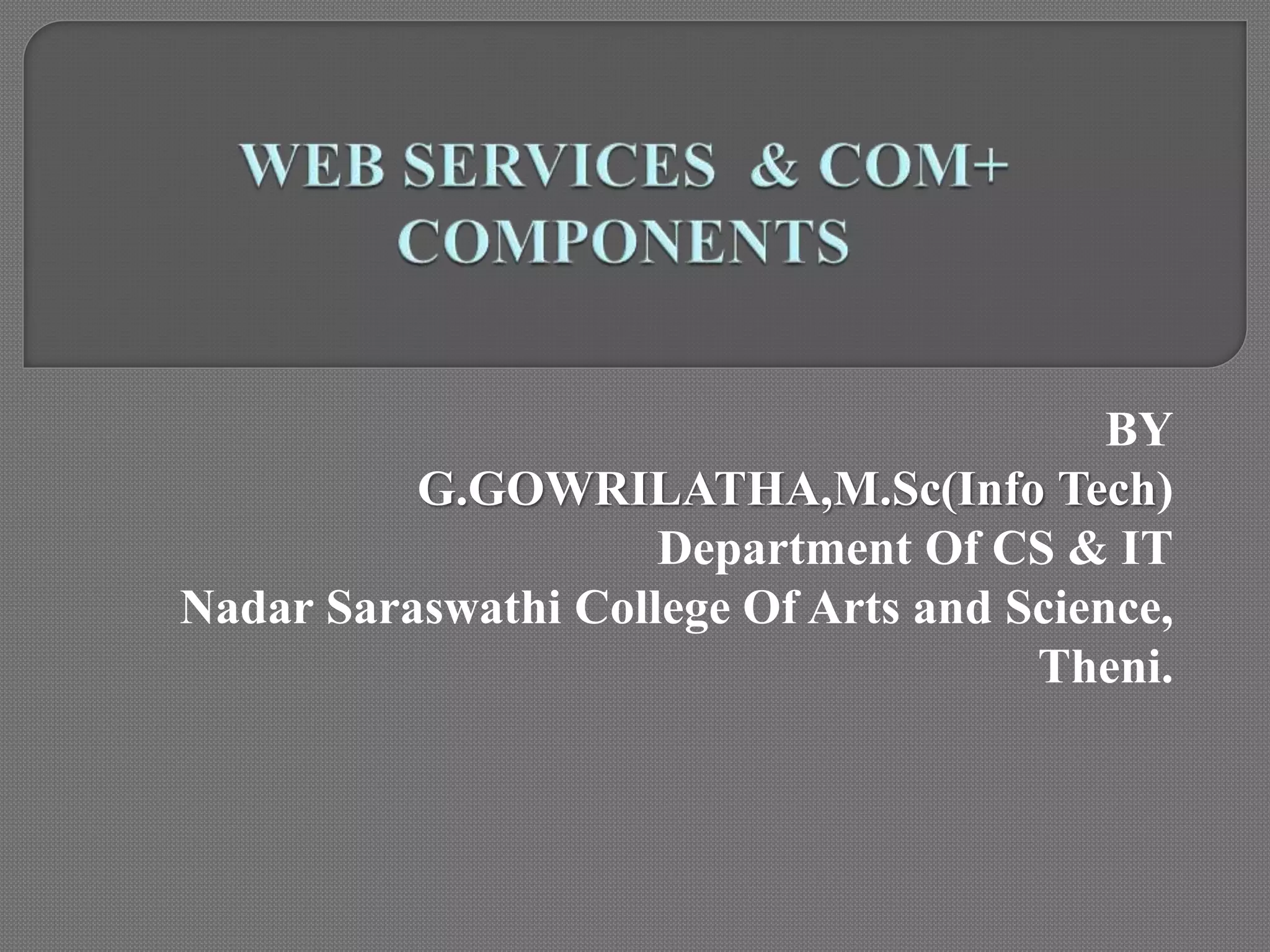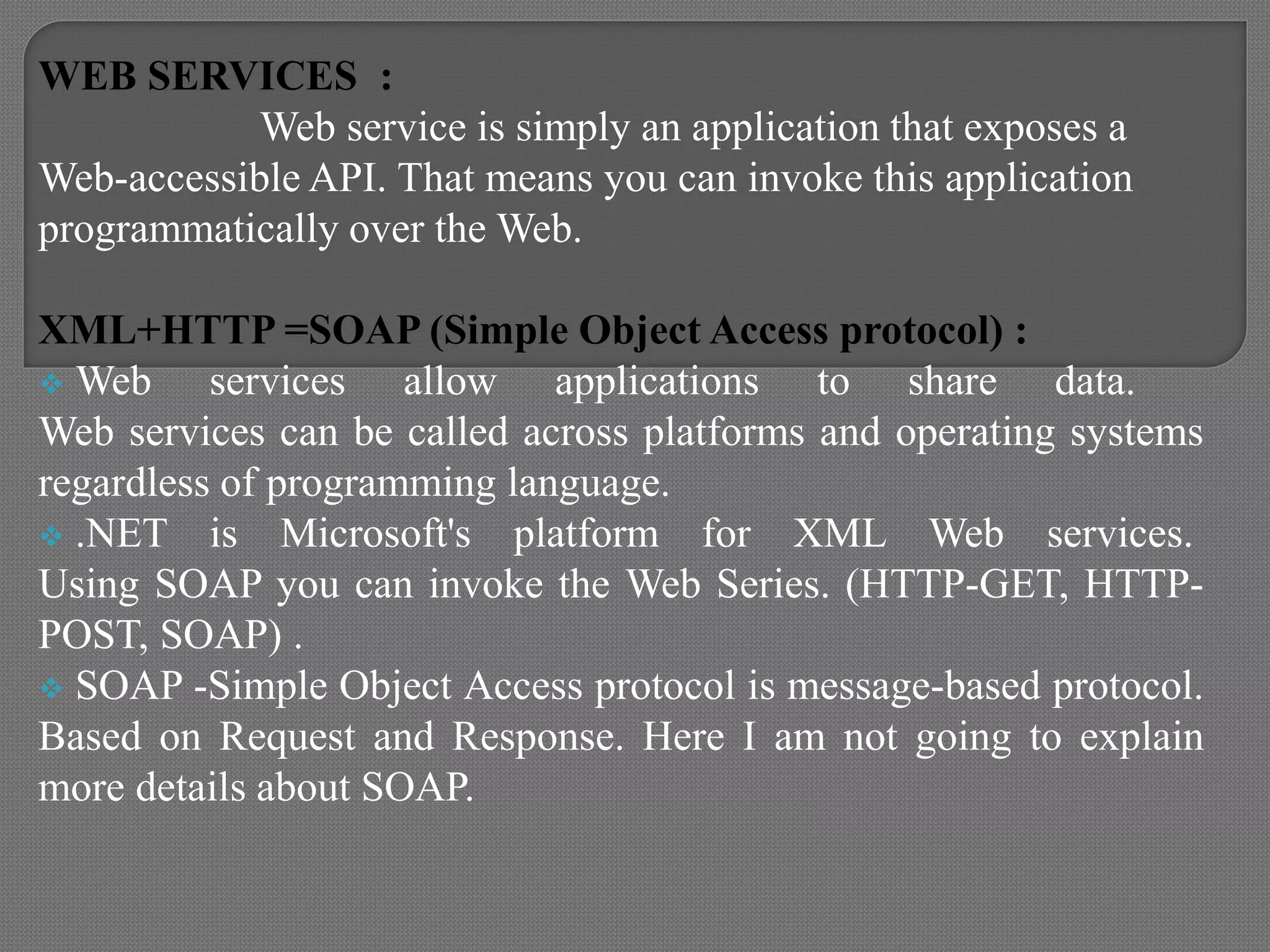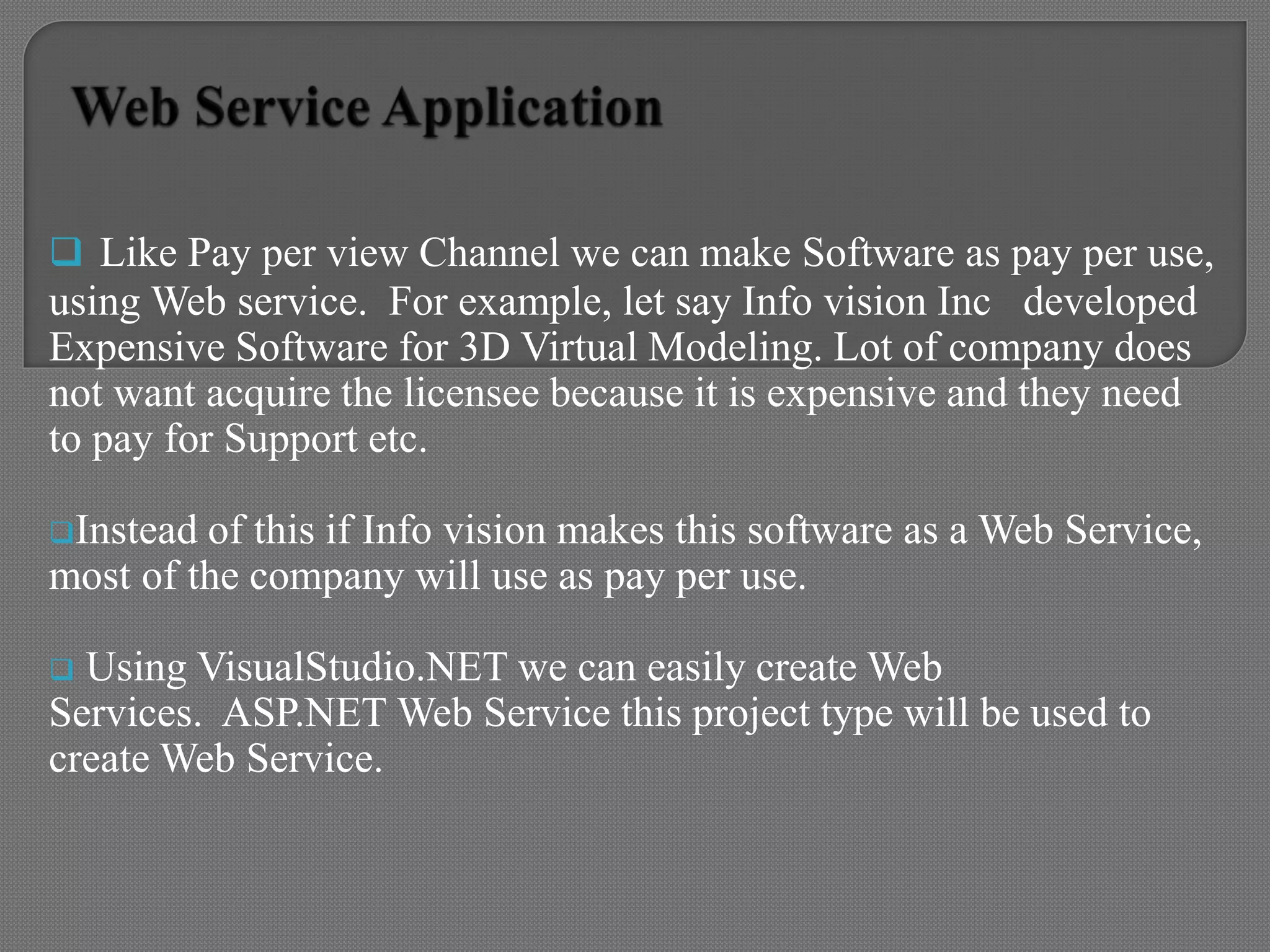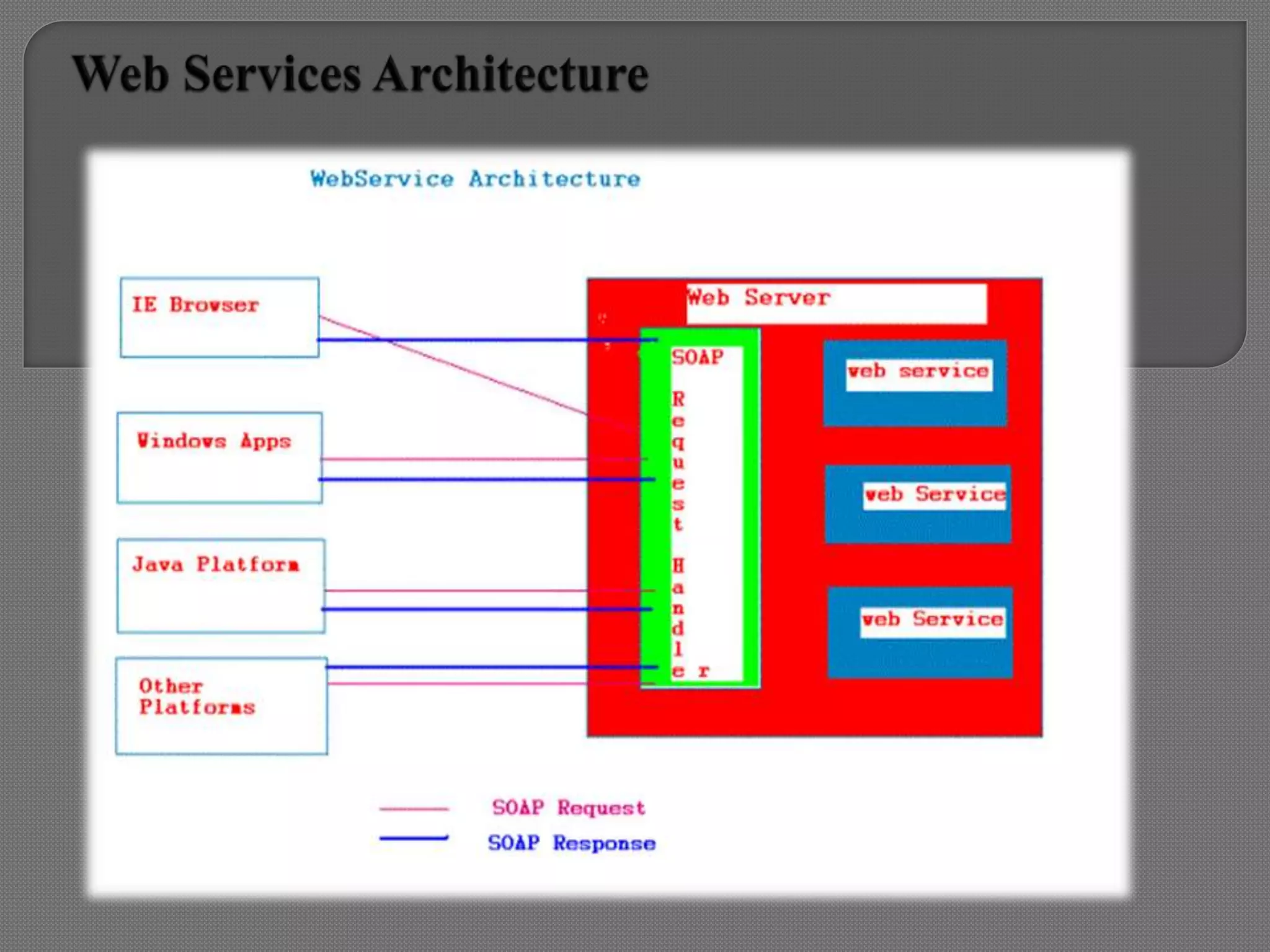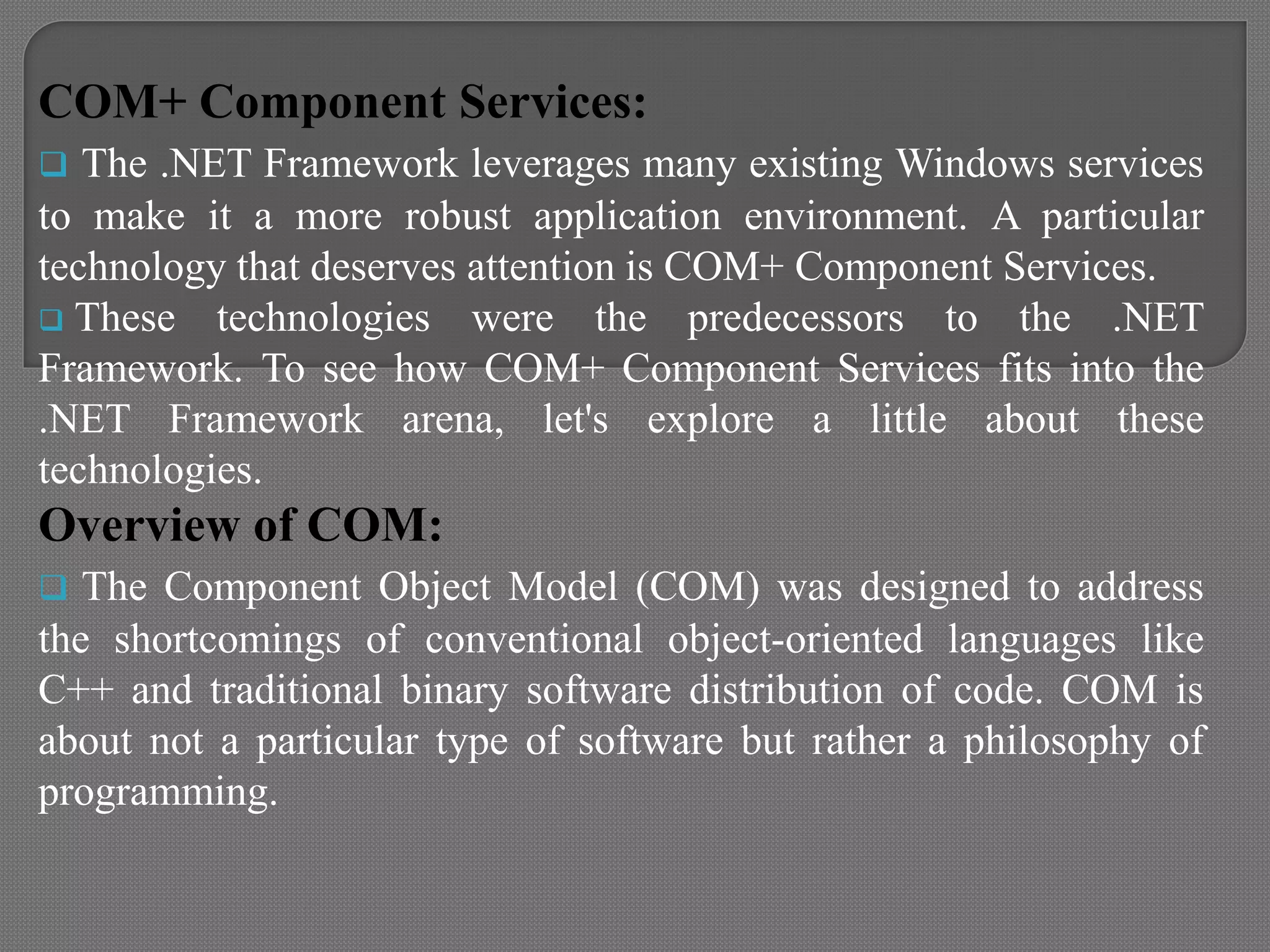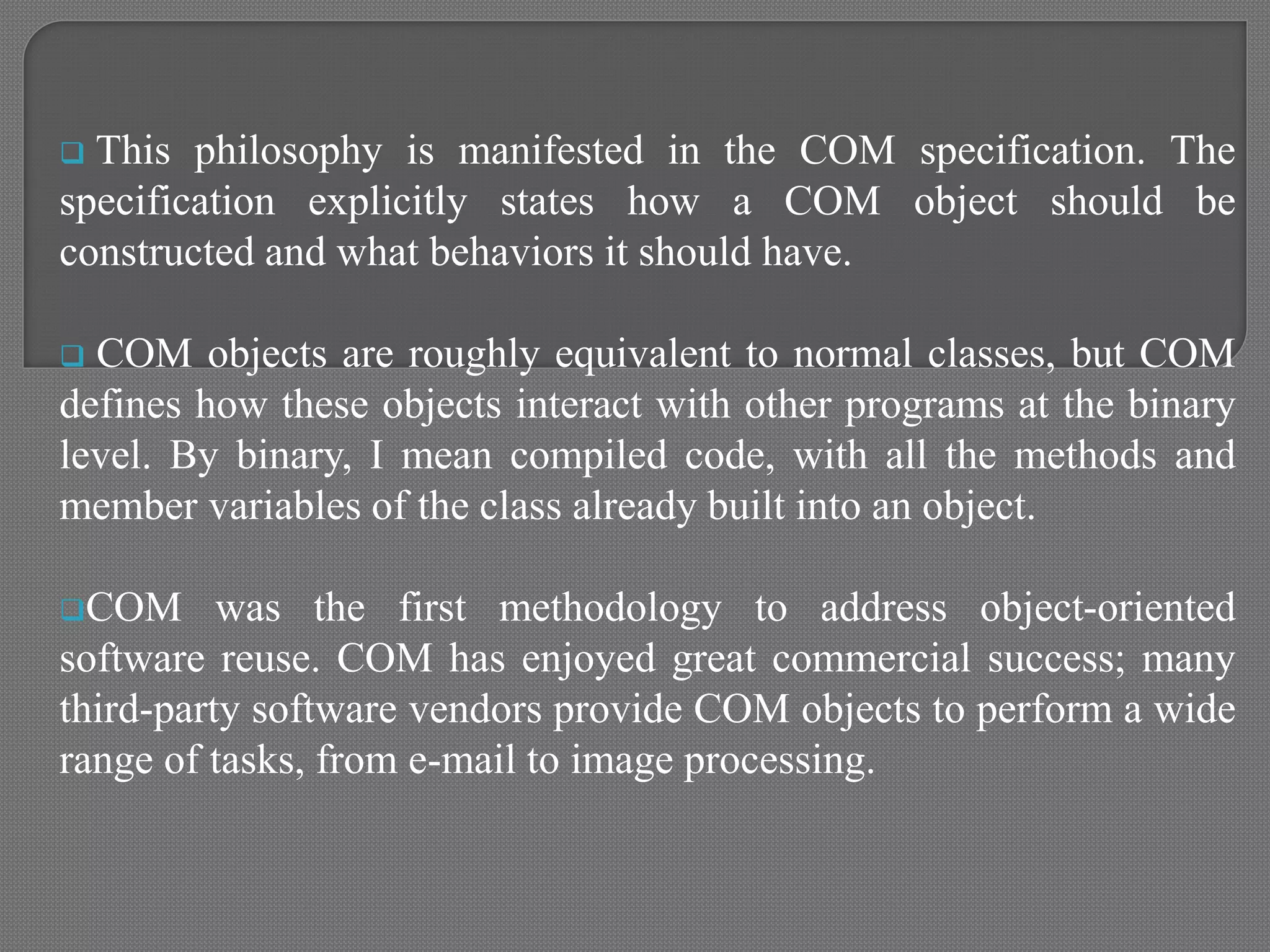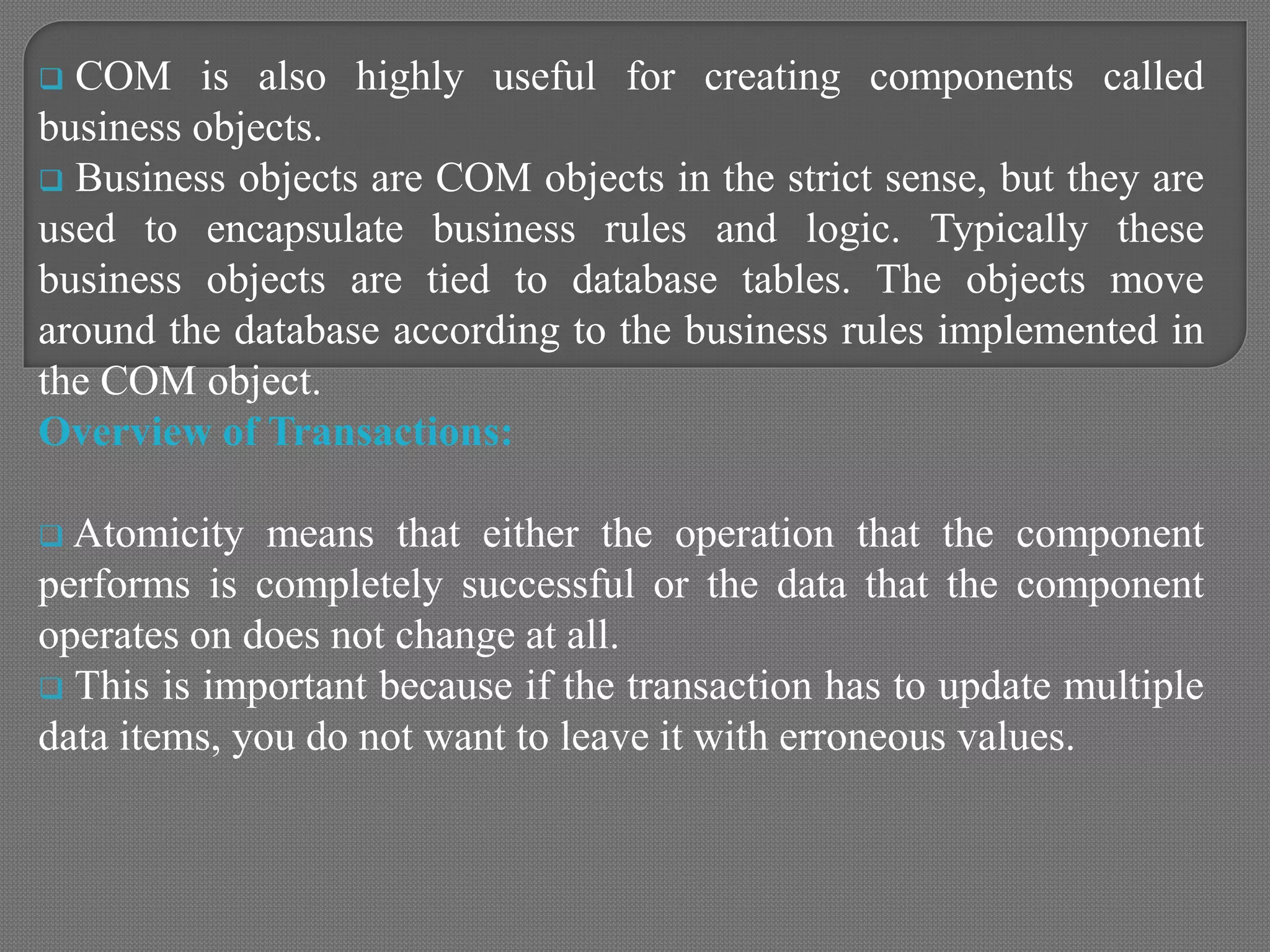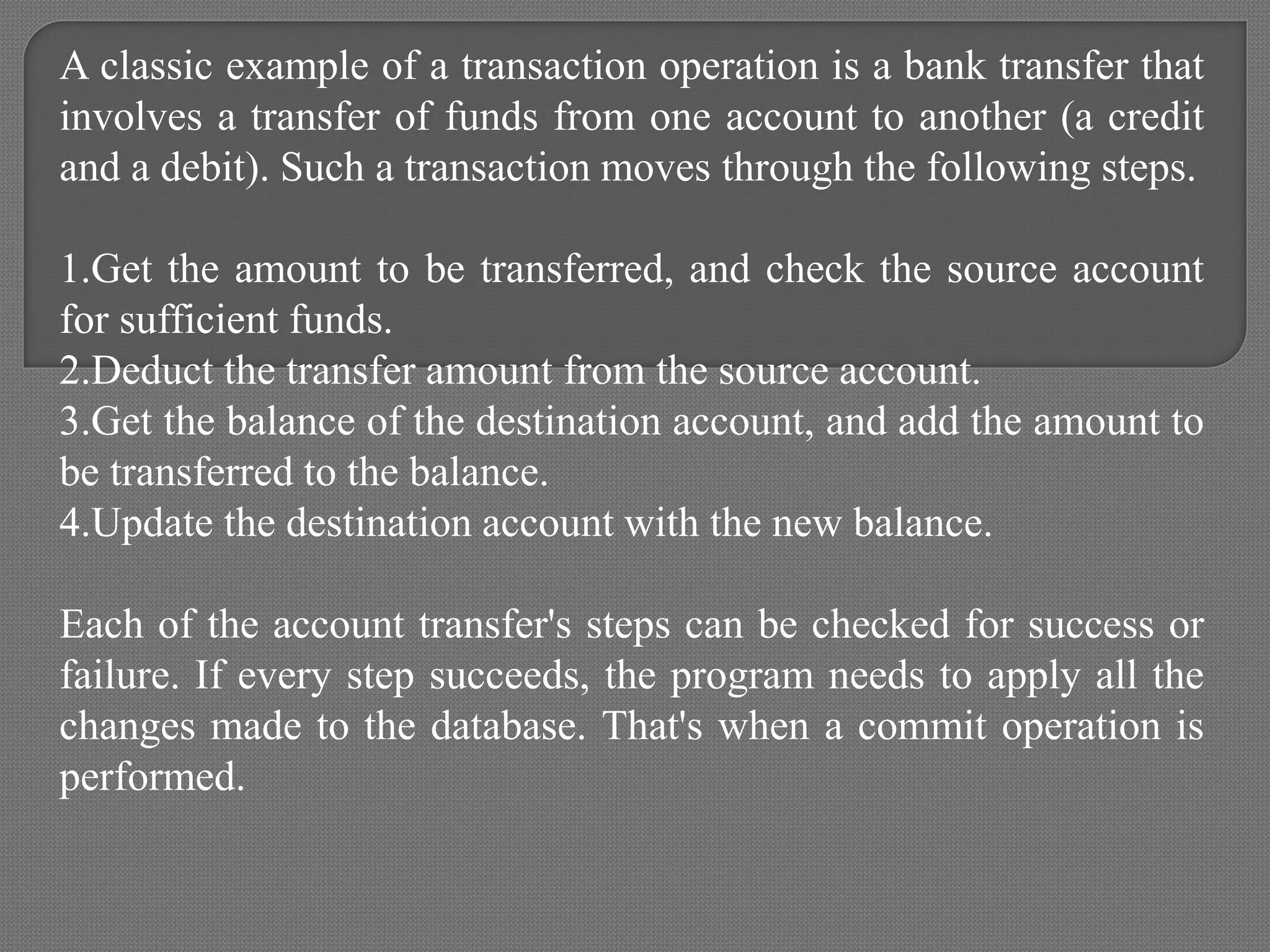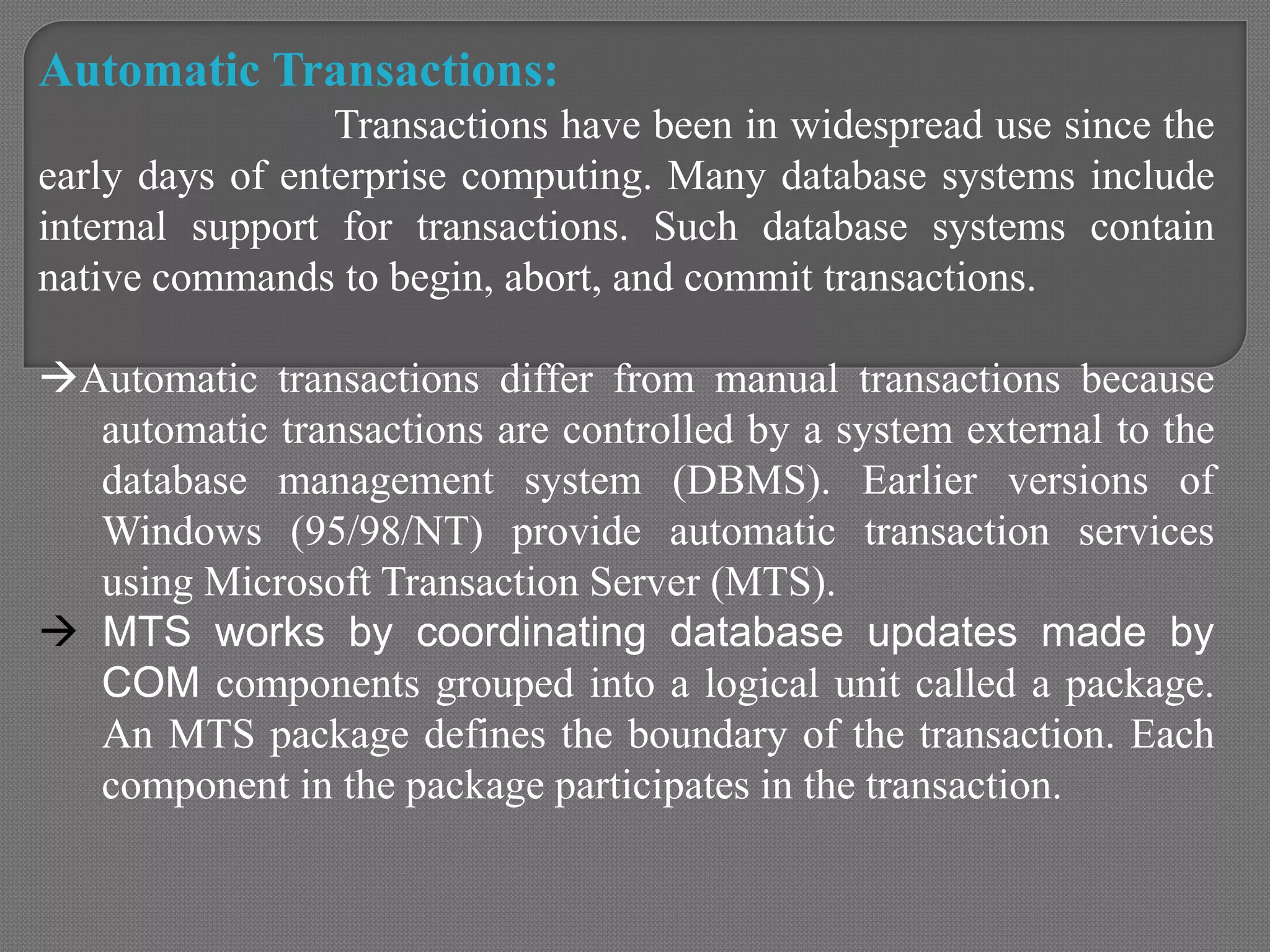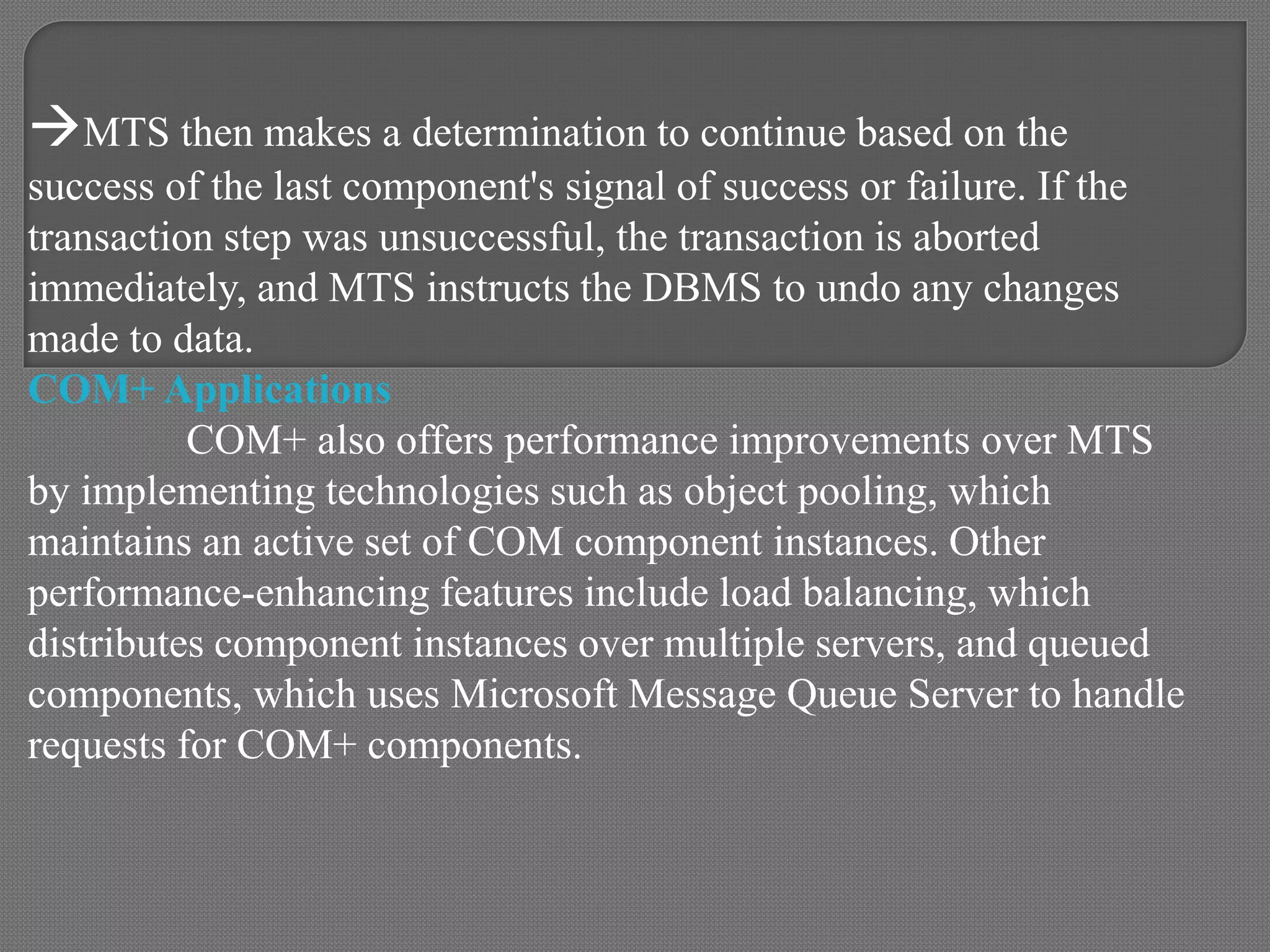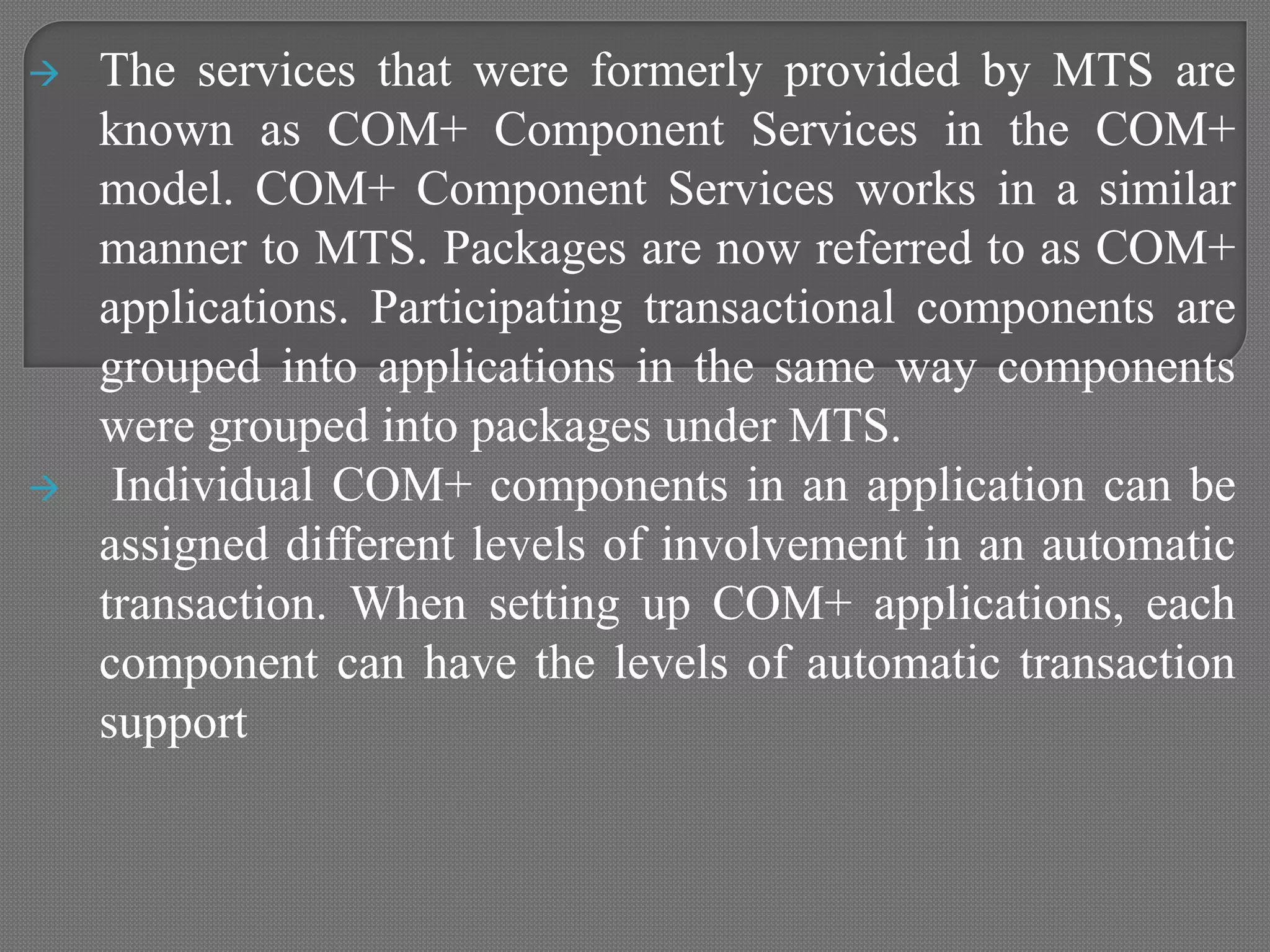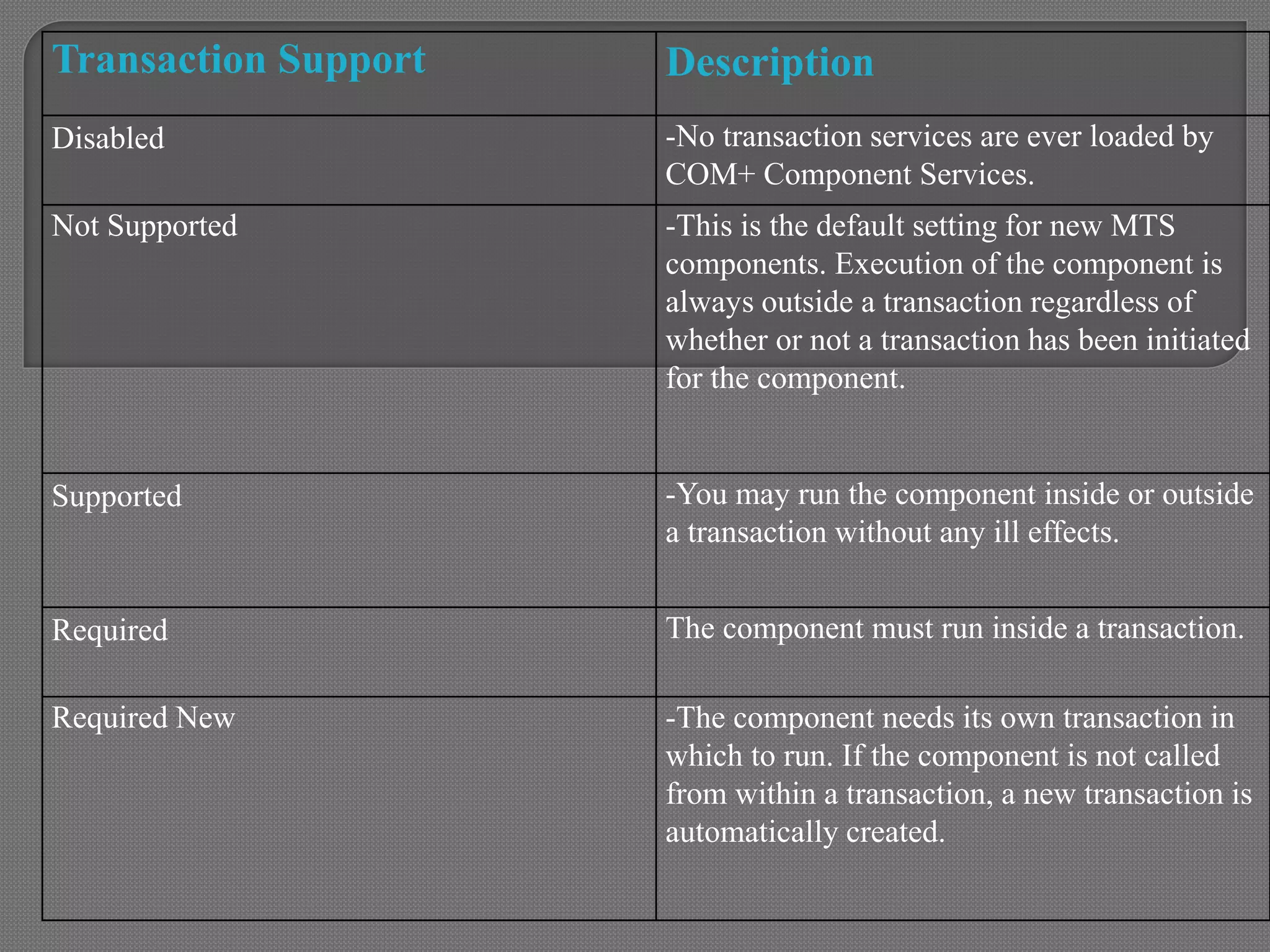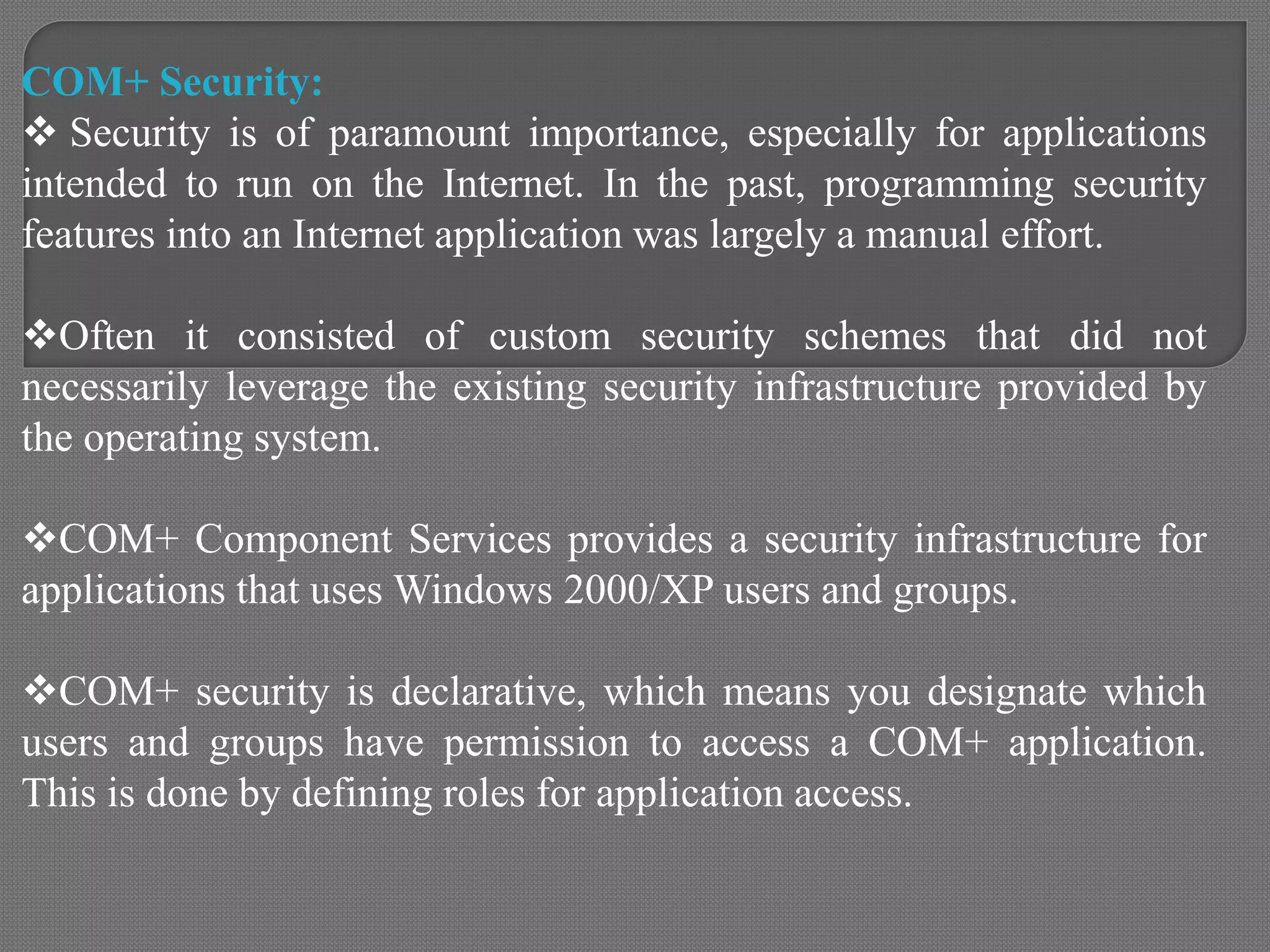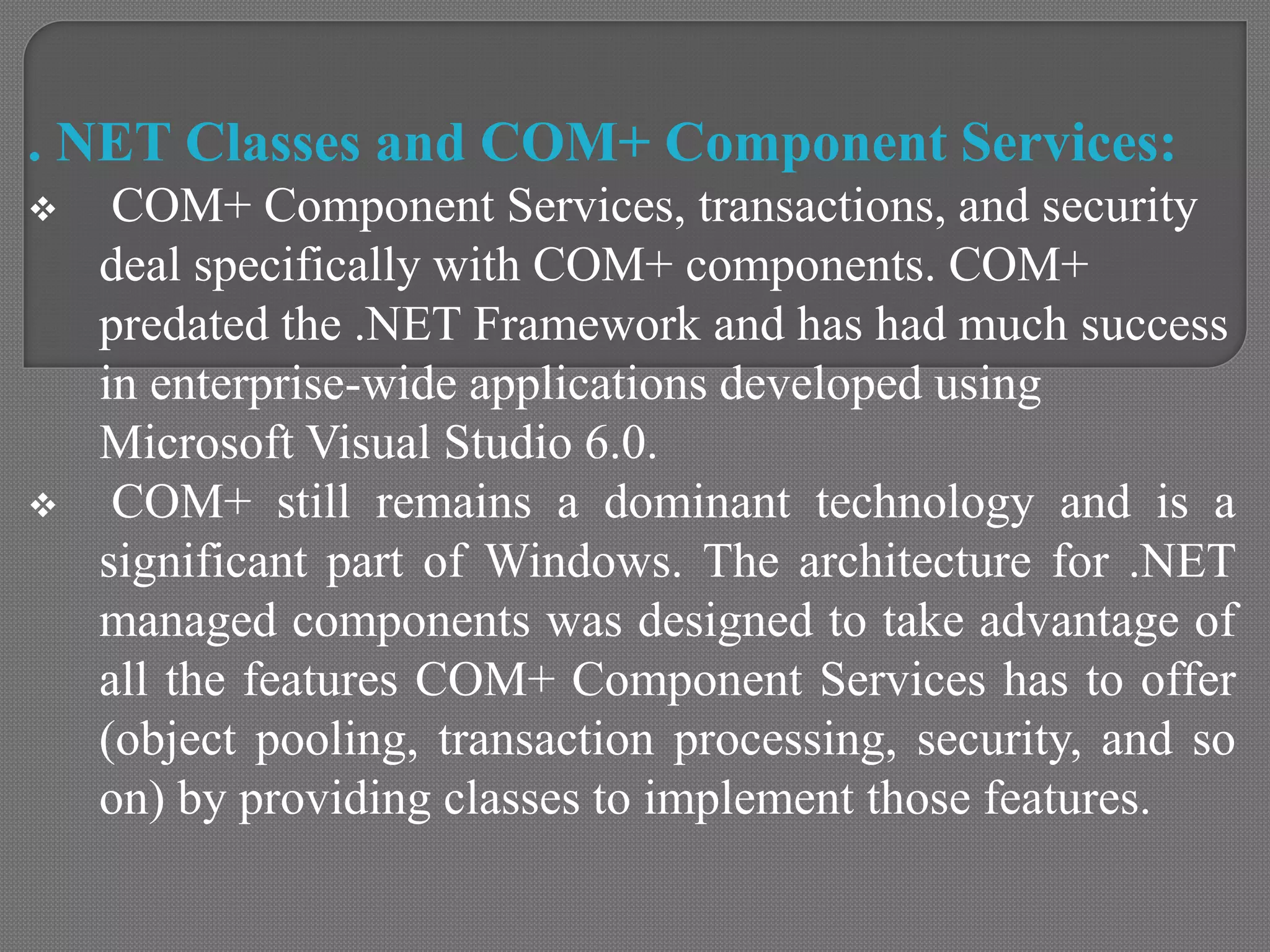This document provides an overview of web services and COM+ Component Services. It discusses how web services allow applications to share data across platforms using XML and HTTP. SOAP is introduced as a messaging protocol for invoking web services. COM+ Component Services are then described as providing transaction processing, security, and other features to .NET applications by leveraging existing Windows services. Transactions are discussed, including how they ensure data integrity through atomic commits or rollbacks. Finally, the document notes that .NET classes were designed to take advantage of COM+ services for enterprise applications.
